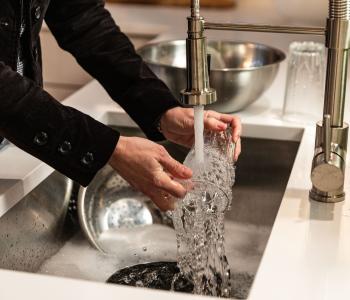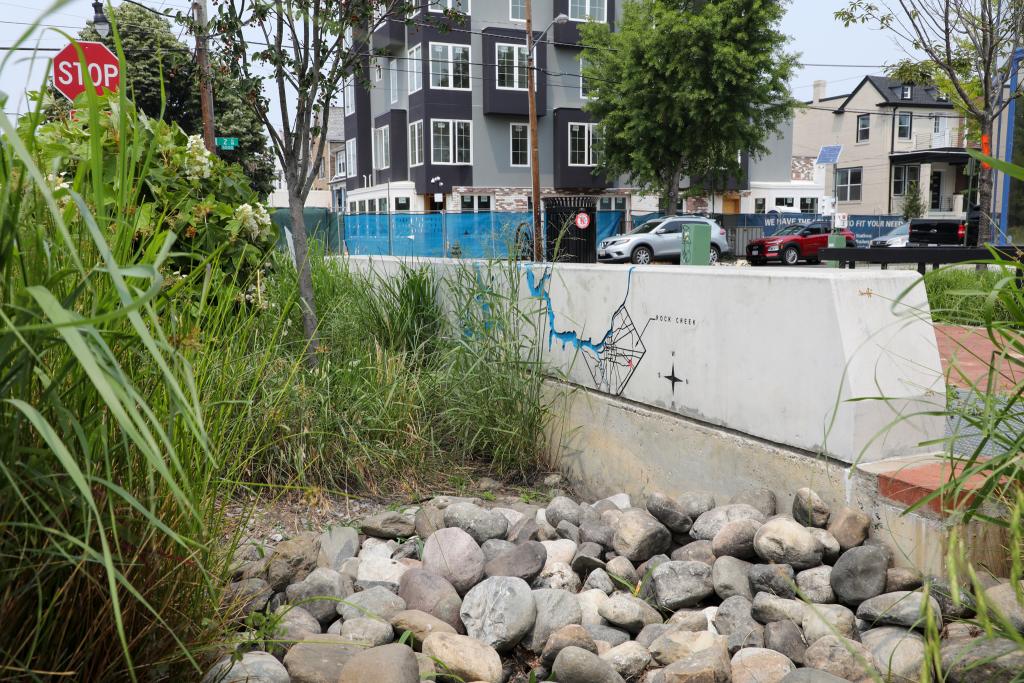WASA ANALYSIS INDICATES CHLORINE ADDITION MAY REDUCE LEAD CONCENTRATIONS
A preliminary analysis conducted by District of Columbia Water and Sewer Authority (WASA) of customer water samples drawn between April 2 and May 8 appears to indicate that chloramine, a disinfectant used in drinking water to guard against bacteria, viruses and other disease-causing agents, may have changed the water composition causing increased levels of lead in drinking water received by some District residents.
“We may have identified the primary factor responsible for causing elevated levels of lead in the homes of persons who have lead service pipe lines,” said Jerry Johnson, WASA General Manager. “While it’s early in the process, an analysis of this data indicates that the change to chloramine for disinfection of the water supply may have caused the water to become more corrosive thereby causing service line pipes to leach lead. We are sharing this data with the Washington Aqueduct and EPA, and we are strongly urging that they expedite a review of this data and what it means for the water treatment process and our community.”
In April as part of routine system maintenance, the Washington Aqueduct temporarily suspended chloramine in the water system and replaced it with free chlorine. In 2002, the Environmental Protection Agency (EPA) approved the Aqueduct’s proposal to replace chlorine with chloramine in the water to reduce potential formation of disinfection by products. Subsequently, the level of disinfection by products in the District’s water fell dramatically from approximately 75 parts per billion to approximately 40 parts per billion.
As part of its ongoing testing for lead levels, WASA compared customer water samples from March, prior to the suspension of the chloramine, to April, after the disinfectant was replaced with chlorine. The results show that between April 2 and May 8, approximately 25 to 30 percent of homes with lead service pipe lines sampled showed significant lower levels of lead in the water.
“While chloramine successfully reduces the level of disinfection by products, there has been speculation that the disinfectant may be the cause of elevated lead levels in the water. We did not, however, want to draw conclusions in the absence of real world data,” Johnson said. “WASA’s analysis seems to indicate that speculation may be accurate.”
In addition to the April customer water samples, which are voluntarily sent in to WASA, the water utility conducted extensive profiling at seven D.C. homes. Those extensive studies documented remarkably lower levels of lead during the period of chlorine use.
“As part of our effort to ensure that the community is fully aware of the steps WASA is taking to address the lead problem, we felt it was important to release this preliminary data as soon as it was compiled,” Mike Marcotte, WASA’s Deputy General Manager and Chief Engineer said. “WASA, along with its partners will further study the data to determine if additional changes in the water chemistry are warranted.”
While encouraged by this preliminary data, WASA urged its customers to continue taking recommended steps to reduce exposure to lead in the drinking water. Residents with lead service line pipes or concerned about lead in their water should draw cold water for drinking or cooking after a high water use activity in the home such as bathing or washing clothes so that a total of at least 10 minutes of flushing has occurred.






